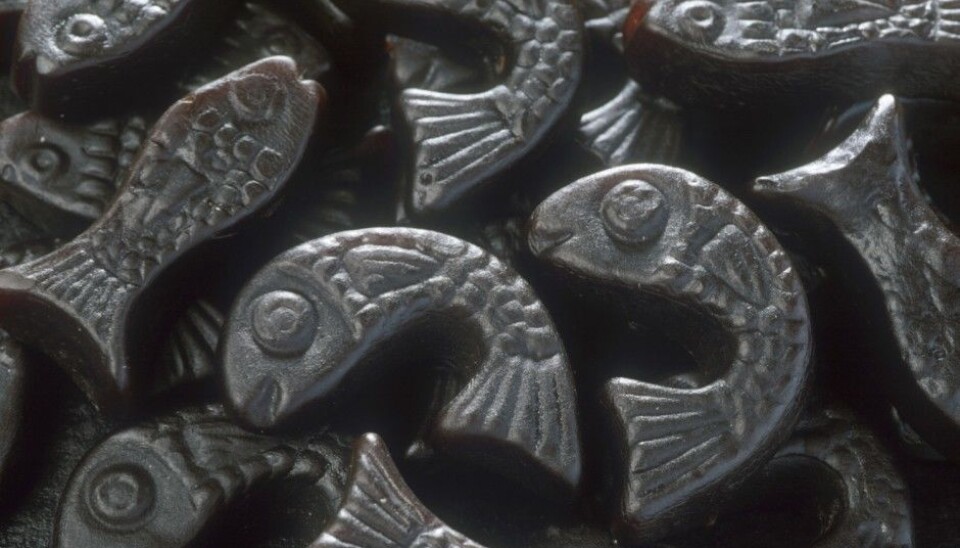
Licorice can be harmful to the developing foetus
A new study raises concerns about the long-term effects of licorice on the development of the foetus.
Visitors to the Nordic countries might be forgiven if they think that licorice is the number one regional sweet. Black licorice, salted licorice, licorice shaped like little boats, or pipes, or fish — it’s everywhere.
But a series of studies highlights a darker side of this popular treat: when consumed in high amounts by pregnant women, it can have negative, long-term effects on the development of the foetus.
Researchers have long suspected that licorice in large quantities can be harmful to the developing foetus. As early as 2009, Finnish researchers found that eight-year-olds whose mothers ate a lot of licorice when they were pregnant had reduced memory and vocabulary.
Now the same Finnish scientists have followed up on their finding to examine the longer-term effects on children exposed to licorice in utero.
The Finnish study, published in the American Journal of Epidemiology, confirms that large amounts of licorice are not good for the foetus. However, a consumption limit on how much licorice is safe for pregnant women has yet to be established.
Lower IQs
The researchers looked at 378 12- and 13-year-old children, all born in 1998. Fifty-one of the teens in the study group had mothers who ate large amounts of licorice while pregnant. This group was compared to the remaining 327 children whose mothers ate little or no licorice.
The researchers found that children whose mums ate licorice performed less well in cognitive tests than the comparison group.
Cognition is a term that broadly encompasses mental processes, including thinking, perception, attention, problem solving and ability to make decisions.
The differences between the two groups of teens corresponded to between two and seven points on an IQ scale.
Those whose mothers ate a lot of licorice also did worse in tasks that measured memory. They also had more ADHD-like problems than other children, according to reports from the parents.
Girls whose mothers ate a lot of licorice also began puberty earlier than the comparison group, and also matured more quickly.
Two-hundred and fifty grams a week
As of January 2016, Finland began including licorice on the list of foods that are not recommended for pregnant women. However, small amounts of licorice ice cream or a few licorice bites now and then are not dangerous, Finnish officials say.
The Norwegian health authorities do not include licorice on their guidelines for foods that pregnant women should avoid. Instead, Norwegian officials offer broader recommendations, including that pregnant women limit their intake of salt, and sugary foods and drinks. The guidelines also warn against the use of alcohol and nicotine and foods that might contain listeria or toxoplasmosis.
The Finnish study defined high consumption of licorice as the equivalent of 500 milligrams of glycyrrhizin or more a week. Glycyrrhizin is the natural sweetener in licorice and is the substance that causes problems. This on average corresponds to 250 grams of licorice per week.
Low licorice intake was defined as less than 249 milligrams of glycyrrhizin per week, or less than 125 grams of licorice.
Important information
The Finnish researchers believe it is important for pregnant women and women who are planning to become pregnant to be informed about the harmful effects that licorice may have on the foetus.
But they stressed that it is important to view their findings in a larger context, noting that a large number of Finns have been exposed to glycyrrhizin in utero.
And although glycyrrhizin is considered a substance with the potential to affect foetal development, it is impossible to say what this means for the development of any one individual.
Available in products other than licorice
The natural sweetener found in licorice is also added to a variety of other foods, according to lead-author Katri Räikkönen, from the University of Helsinki.
“Other sweets, chewing gum, cakes, syrups, some forms of ice cream, some yoghurt, herbal tea, some soft drinks and herbal medicines and conventional medicines also contain glycyrrhizin,” she wrote in an email.
Räikkönen believes the problem is that manufacturers do not have to label foods that contain glycyrrhizin or the list the amount of the substance in the food.
Causes high blood pressure
It has long been known that licorice causes hypertension and can lead to shorter pregnancies.
Animal tests have also shown that glycyrrhizin leads to higher levels of the stress hormone cortisol. While cortisol is essential for the development of the foetus, it is harmful in large amounts.
Scientific links
- K. Räikkönen et al. Maternal licorice consumption during pregnancy and pubertal, cognitive and psychiatric outcomes in children. Summary. American Journal of Epidemiology, 3 February 2017. doi: 10.1093/aje/kww172
- K. Räikkönen et al. Maternal licorice consumption and detrimental cognitive and psychiatric outcomes in children. Summary. NCBI. 1 November 2009. doi: 10.1093/aje/kwp272.







